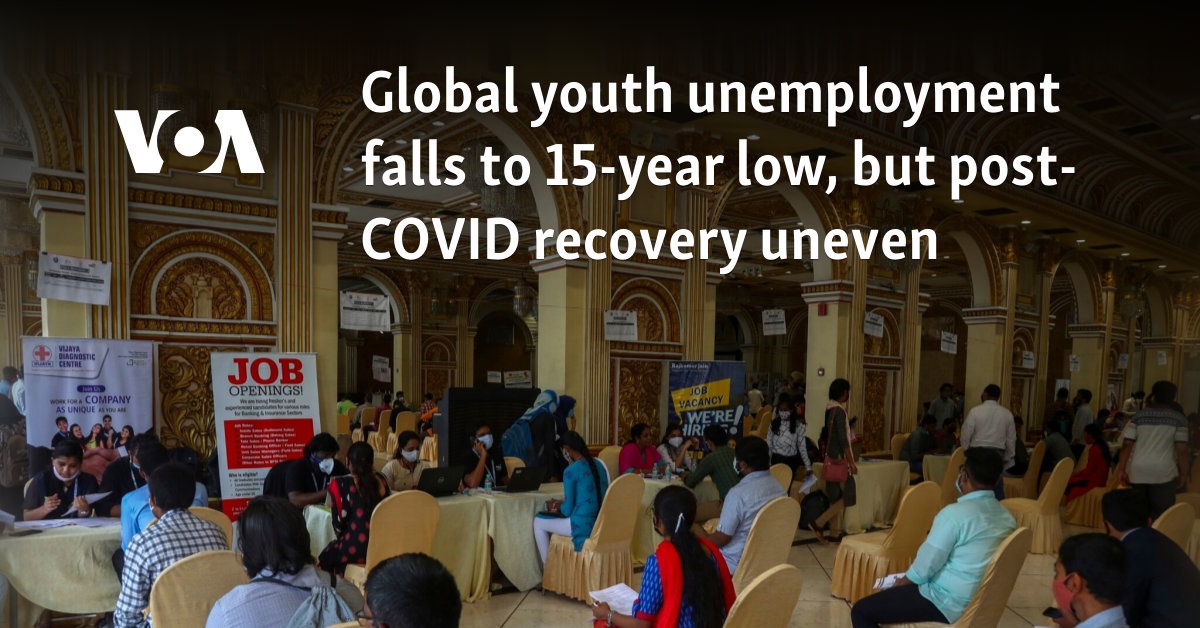As of 2023, the global youth unemployment rate stands at 13%, which is the lowest since the year 2008. This figure shows a drop from the pre-pandemic unemployment rate of 13.8% in 2019. The ILO report forecasts that the unemployment rate will continue to decline reaching 12.8% by the end of 2024.

Also Read: Cruisezilla Ships have Doubled in Size Since 2000, T&E Reveals
The ILO report shows that global youth unemployment rates have reached a 15-year low, dropping to 13% in 2023 equating to 64.9 million young people.
This is a decrease from the pre-pandemic rate of 13.8% in 2019 and further declines to 12.8% are projected for 2024 and 2025.
The four-year improvement in youth labor market conditions is expected to continue. However the benefits of this recovery are not evenly distributed across regions or demographics.
The Arab States, East Asia, Southeast Asia and the Pacific regions have seen higher youth unemployment rates in 2023 compared to 2019.
These areas have struggled to recover from the economic disruptions caused by the COVID-19 pandemic.
Sub-Saharan Africa has one of the lowest youth unemployment rates globally at 8.9%. However, this statistic is somewhat misleading, as it reflects the lack of alternatives rather than the availability of decent jobs.
Many young people in this region cannot afford to be unemployed and are forced into informal or low-paying jobs out of necessity.
The report identifies a troubling trend, one in five young people globally or 20.4%, were classified as NEET in 2023.
This indicates a huge portion of the youth population is disengaged from both the labor market and educational opportunities.
Women are disproportionately represented among NEETs with two out of three NEETs being female. In 2023, the global NEET rate for young women was 28.1%, more than double the rate for young men, which stood at 13.1%.
Although youth unemployment has decreased, the quality of available jobs remains an issue. Over half of the world’s young workers are in informal employment particularly in low- and middle-income countries.
In high-income economies, most young workers have regular, secure jobs, but this is not the case in less developed regions.
In low-income countries, three out of four young workers are either self-employed or hold temporary paid jobs.
The lack of decent work opportunities contributes to the growing anxiety among youth about their future prospects.
Also Read: China’s EVs and Hybrids Surpass 50% of Car Sales for the First Time
The report highlights that young men have benefited more from the labor market recovery than young women.
Although youth unemployment rates for both genders were nearly equal in 2023 (12.9% for women and 13% for men), this represents a change from pre-pandemic years when young men had higher unemployment rates.
The pandemic’s impact on employment opportunities has disproportionately affected young women, who have been slower to recover.
Tthe recovery has not been uniform across all regions. Some areas particularly the Arab States, East Asia, Southeast Asia and the Pacific, have experienced higher youth unemployment rates in 2023 compared to 2019.
In 2023, the global NEET rate stood at 20.4%, a figure that shows a huge portion of the youth population being disconnected from both the labor market and educational opportunities.
The NEET rate is higher among young women with 28.1% of young women classified as NEET compared to 13.1% of young men.
This gender disparity highlights ongoing issues related to gender inequality and the lack of opportunities for young women in many parts of the world.
Globally more than half of young workers are employed in the informal sector. This type of employment is typically characterized by a lack of job security, social protection and access to benefits such as health insurance and pensions.
The report points out that only in high- and upper-middle-income economies do the majority of young workers hold regular, secure jobs.
In low-income countries, three out of four young workers are either self-employed or in temporary paid positions.
The report shows that the youth unemployment rates for young men and women in 2023 are nearly equal, at 12.9% for women and 13% for men.
The ILO stresses the importance of creating decent jobs for young people as a means of ensuring stability, inclusion and social justice.
The lack of progress in this area over the past 20 years is a major concern and the report calls for renewed efforts to improve job quality for youth.
Also Read: Elon Musk Sues Unilever, Mars and Other Companies Over X Advertising Boycott





















